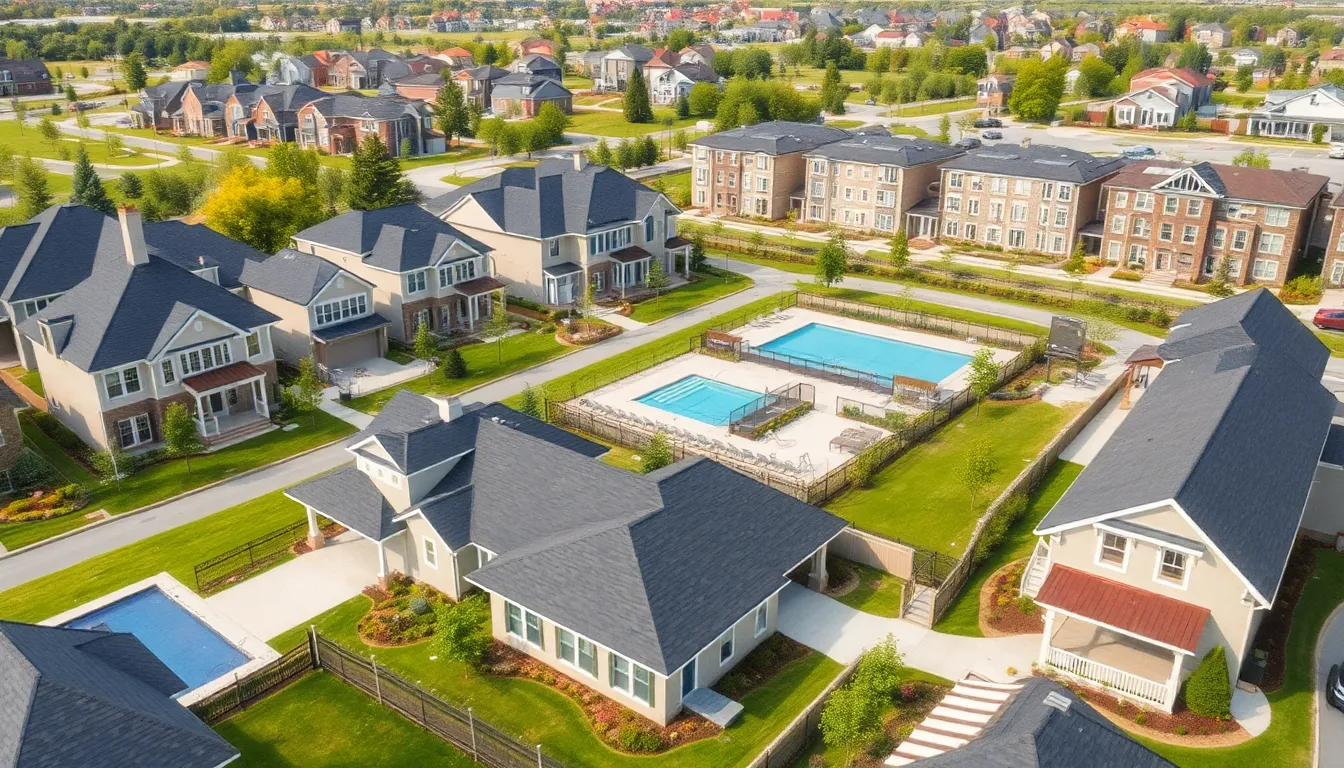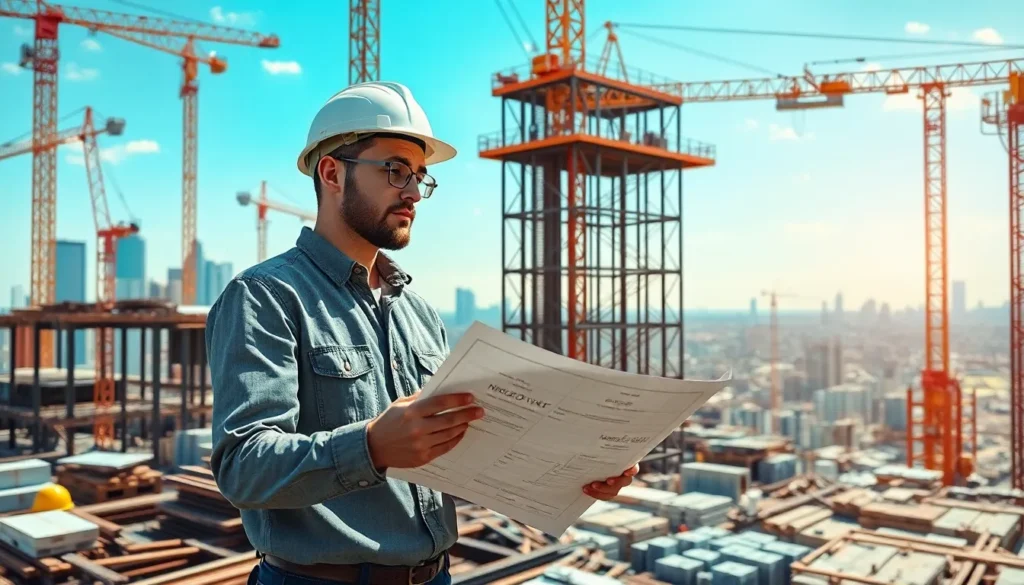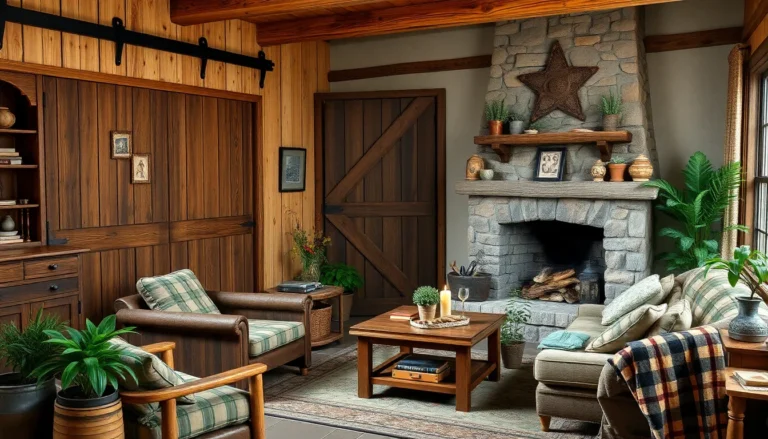Table of Contents
ToggleBuilding construction isn’t just about bricks and mortar; it’s a fascinating blend of art, science, and a dash of chaos. Whether it’s a cozy cottage or a towering skyscraper, each type of construction has its own quirks and benefits. From traditional methods that have stood the test of time to innovative techniques that make architects’ dreams come true, the world of construction is anything but boring.
Overview of Types of Building Construction
Building construction encompasses various types, each with distinct characteristics. Residential construction focuses on homes, including single-family houses, townhouses, and condominiums. Commercial construction targets businesses, featuring office buildings, retail spaces, and warehouses. Industrial construction deals with manufacturing and production facilities, which include factories and power plants.
The construction method determines overall durability, cost, and sustainability. Wood frame construction is common in residential buildings, known for its affordability and ease of assembly. Steel frame construction provides strength, often used in commercial high-rises and industrial facilities. Concrete construction offers exceptional durability, primarily utilized for foundations, slabs, and walls.
Modular construction involves prefabricating building sections offsite and assembling them on location. This efficient approach speeds up the building process while minimizing waste. Sustainable construction prioritizes eco-friendly materials and energy-efficient systems to reduce environmental impact, popular for both residential and commercial projects.
Mixed-use construction combines residential, commercial, and sometimes industrial spaces, aiming to create vibrant urban environments. This type encourages walkability and community engagement. Each type of construction presents unique advantages and challenges, requiring careful planning and execution.
Technology increasingly shapes modern construction practices. Innovations such as Building Information Modeling (BIM), drones, and 3D printing improve efficiency and accuracy. Understanding the various types of building construction allows stakeholders to select the appropriate methods for their projects, ensuring successful outcomes.
Residential Construction

Residential construction involves building structures designed for people to live in. It includes various types of housing, each meeting different lifestyle needs.
Single-Family Homes
Single-family homes stand as one of the most common residential construction types. Typically, these properties offer privacy and outdoor space. In 2021, about 1.5 million single-family homes were completed in the United States. Construction often utilizes wood framing, which provides affordability and versatility. Various architectural styles, ranging from contemporary to traditional, enhance aesthetic appeal. Homeowners usually prefer customizable designs, allowing personal expression in their living spaces.
Multi-Family Units
Multi-family units cater to multiple households within one building or complex. Examples include apartments, condominiums, and townhouses. The National Multifamily Housing Council reported a surge in multi-family construction, particularly in urban areas. Developers often choose steel or concrete for durability and safety, especially in high-rise constructions. Shared amenities, such as pools and gyms, enhance the living experience. These units typically encourage a sense of community while maximizing space efficiency in densely populated regions.
Commercial Construction
Commercial construction encompasses structures designed primarily for business purposes. This category plays a vital role in the economy by offering facilities for various industries.
Office Buildings
Office buildings serve as essential hubs for professional activities. High-rise structures often utilize steel frame construction, ensuring stability and durability. In urban environments, these buildings maximize limited space while accommodating many employees. In 2021, office vacancy rates in the U.S. reached 16.5%, reflecting changes in work patterns. This leads to adaptive reuse of older structures, converting them into modern office spaces. Sustainable design practices also gain traction, including energy-efficient systems and green roofs.
Retail Spaces
Retail spaces cater to consumer goods and services, significantly impacting shopping experiences. Various formats, including storefronts and shopping malls, present unique architectural challenges and opportunities. In 2022, the U.S. retail market size reached approximately $5.6 trillion, highlighting its importance. Constructing these spaces often involves integrating advanced technology for improved customer interaction. Additionally, many retail environments focus on aesthetic appeal and accessibility, enhancing the overall shopping experience. Combining functionality with creativity drives innovation in retail construction.
Industrial Construction
Industrial construction involves building structures for manufacturing, storage, and distribution. Notably, it encompasses warehouses and factories, each serving distinct purposes in the industrial landscape.
Warehouses
Warehouses serve as crucial storage facilities for goods and materials. A typical warehouse includes features like high ceilings and wide open spaces to accommodate large inventories. In 2022, U.S. warehouse space reached approximately 1 billion square feet, driven by e-commerce and logistics demands. Automation technology, such as robotics and conveyor systems, enhances efficiency in these facilities, contributing significantly to streamlined operations.
Factories
Factories focus on the production of goods, integrating machinery and labor for manufacturing processes. Many factories utilize flexible layouts to adapt to changing production requirements. Data from 2021 indicates that the U.S. manufacturing sector produced goods valued at over $2.3 trillion, emphasizing the importance of modern factory construction. Sustainable practices have gained traction, with many facilities implementing energy-efficient systems to reduce their environmental impact.
Infrastructure Construction
Infrastructure construction focuses on essential facilities that support societal function, comprising bridges, roads, and highways. These structures bolster connectivity and enhance economic productivity.
Bridges
Bridges serve as critical connections over obstacles like rivers and valleys. They facilitate the movement of people and goods, often utilizing materials like steel and concrete for strength. In 2022, the American Society of Civil Engineers reported that approximately 43% of U.S. bridges needed repair or replacement. Investments in modern design and construction techniques significantly improve the safety and longevity of these structures.
Roads and Highways
Roads and highways form the backbone of transportation networks. They accommodate the movement of vehicles, linking cities and towns. The Federal Highway Administration noted that the U.S. highway system spans over 160,000 miles. Proper construction techniques enhance durability, while regular maintenance ensures safety and efficiency for daily commuters. Modern projects increasingly focus on reducing congestion and improving accessibility, addressing the growing need for sustainable infrastructure.
The diverse landscape of building construction reflects the creativity and innovation within the industry. Each construction type serves a unique purpose and meets specific needs, from residential homes that foster community to commercial spaces that drive economic growth. As technology continues to advance, the integration of sustainable practices and modern techniques will shape the future of construction.
Stakeholders must stay informed about the evolving methods and materials to ensure successful project outcomes. By embracing these changes, they can contribute to a more efficient and environmentally friendly built environment. Understanding the nuances of different construction types is essential for anyone involved in the industry, paving the way for smarter and more resilient structures.








